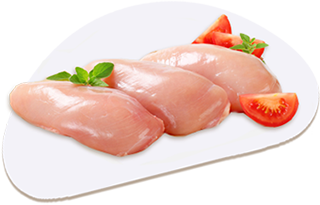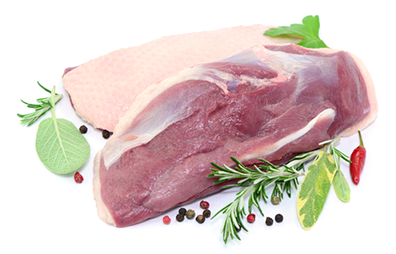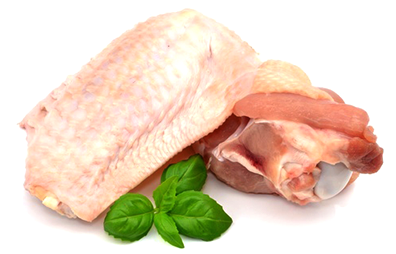Poultry meat - chicken

It is known that already two million years ago, African hominids ate poultry. Our ancestors from 150 thousand years liked poultry - evidence of this study carried out in one of the caves in Spain. The results of these discoveries were reported by “Discovery”. 202 poultry bones of the Aythya genus have been discovered by archaeologists in the Bolomor cave in Spain. The find came from 150 thousand years ago.
Studies show that domestication of birds has started more than 10,000 years ago in the jungles of Thailand, Vietnam and Southeast Asia.
The chicken are the most widespread domestic animals, there are more of them in the world than any other species of bird. People are breeding chickens primarily as a source of food, meat and eggs.
Poultry, compared to other animals, it is juicy and crisp . After heat treatment it smells nice and its taste becomes sweet. Unlike beef, it is softer, so it is not hard and easy to cut.
Compared with beef and pork meat, poultry meat has a higher content of wholesome, easily absorbed protein by the body with the necessary amino acids. It has lower collagen content. Contains less fat, therefore has a lower energy value (pork has almost 5 x more fat, and beef
2 x more than chicken).
It has a high content of zinc, magnesium, potassium and B vitamins, which increase the body’s ability to take energy from food and strengthen the immune system. In addition, it provides our body with coenzyme Q10 - one of the strongest antioxidants, slowing down the aging process.
Poultry also contains more unsaturated fatty acids, especially linoleic, which our body itself does not produce. Lower fat content affects less calorie. A serving of 100 grams of chicken breast without skin provides just 99 kcal (and only 15 grams of fat). The same amount of pork ham it up 260 kcal.
Poultry meat is ideal for people:
- which want to stay fit, eat light foods
- stay on a gluten free diet
- prefer low fat products that have a positive effect on the heart
- people who like lightly assimilated dishes
- want to improve body’s resistance and improve skin condition (because it is a good source of zinc)
- taking care of nervous system (high content of vitamin PP)
- taking care of digestive tract (niacin removes bad cholesterol from the arteries)


